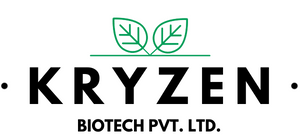Choosing the right crops for your hydroponic farm and ensuring successful propagation are crucial steps in achieving optimal yields. In this chapter, we will explore the process of selecting suitable crops for hydroponic cultivation and methods for their propagation.
- Crop Selection Criteria: We will discuss the key factors to consider when selecting crops for hydroponic farming. Factors such as market demand, growth characteristics, nutritional requirements, and climate suitability will be explored. You will learn how to assess the profitability and market potential of different crops and make informed decisions based on your specific goals and resources.
- Crop Varieties and Cultivars: Crop varieties and cultivars play a significant role in hydroponics. We will delve into the importance of selecting high-yielding, disease-resistant, and flavorful varieties that are well-suited for hydroponic conditions. You will learn about different crop categories, such as leafy greens, herbs, vine crops, and flowering plants, and their respective cultivars suitable for hydroponic cultivation.
- Seed Selection and Sourcing: The quality of seeds directly impacts crop performance. We will guide you in selecting high-quality seeds that are disease-free, genetically stable, and adapted to hydroponic systems. You will learn about reputable seed suppliers and the importance of seed testing and certification.
- Seed Germination Techniques: Successful germination is critical for seedling establishment. We will explore various germination techniques suitable for hydroponic farming, including media-based germination, paper towel method, and floating trays. You will learn about optimal temperature, humidity, and lighting conditions to promote seedling growth and vigor.
- Vegetative Propagation: Some crops are best propagated vegetatively rather than from seeds. We will discuss different methods of vegetative propagation, such as stem cuttings, division, and tissue culture. You will learn about the advantages and considerations of each method and how to ensure successful establishment of vegetative propagules.
- Transplanting Seedlings: Transplanting seedlings from the propagation area to the main hydroponic system requires care and precision. We will guide you through the proper techniques for handling and transplanting seedlings, including root trimming, acclimatization, and timing considerations. You will learn how to minimize transplant shock and promote rapid establishment of seedlings in the hydroponic system.
- Crop Rotation and Succession Planting: Crop rotation and succession planting are essential strategies for maintaining soilless systems’ health and maximizing productivity. We will discuss the benefits of crop rotation, including pest and disease management, nutrient balance, and soil health. You will learn how to plan and implement effective crop rotation and succession planting schedules in your hydroponic farm.
By the end of this chapter, you will have a thorough understanding of the criteria for selecting hydroponic crops, techniques for successful seed germination and vegetative propagation, and strategies for crop rotation and succession planting. Armed with this knowledge, you will be well-equipped to make informed decisions regarding crop selection and propagation in your hydroponic farm.

